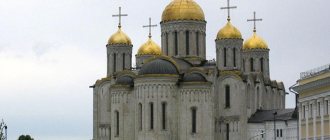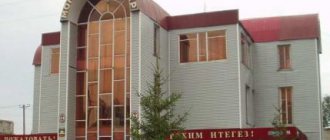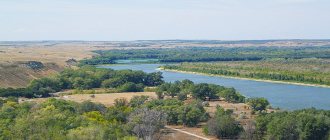History of Taganrog[edit]
Main article: History of Taganrog
The history of the city dates back to the late Bronze Age - early Iron Age (between the 20th and 10th centuries BC), when it was the earliest Greek settlement in the north-west Black Sea region and was mentioned by the Greek historian Herodotus as Emporion Kremnoi. . [17] In the 13th century, Pisan merchants founded the colony Portus Pisanus, which, however, did not last long. [18] Taganrog was founded by Peter the Great on September 12, 1698. [3] The first Russian Navy base, it hosted the Azov flotilla of Catherine the Great (1770–1783), which later became the Russian Black Sea Fleet. Taganrog received city status in 1775. [4]
By the end of the 18th century, Taganrog lost its importance as a military base after Crimea and the entire Sea of Azov were annexed to the Russian Empire. In 1802, Emperor Alexander I granted the city special status, which lasted until 1887. In 1825, Alexander I's palace in Taganrog was used as his summer residence, and he died there in November 1825. Also in Taganrog is the House of the Teacher, a mansion, in which featured numerous artists. Although it was shelled and damaged by the Anglo-French fleet in 1855, [18] Taganrog became an important trading port, used for the import and export of grain, from the late 19th century to the early 20th century. The city's industrialization increased when Belgian and German investors established a boiler house, a foundry, a tannery and an oil factory. By 1911, fifteen foreign consulates had opened in the city. [19]
During the First World War, Taganrog was occupied by the German army from May to August 1918. In 1919, General Anton Denikin established his headquarters in the city's Avgerino mansion, commanding the White Russian troops fighting in southern Russia during the Russian Civil War. War . When the White Russians were defeated on 25 December 1919 and Bolshevik rule was established in the city, Denikin's remaining troops and the British consulate were evacuated by HMS Montrose
.
Full powers were granted to the Executive Committee of the City Council of the Workers' Council on December 17, 1920, and Taganrog briefly became part of the Ukrainian SSR as the administrative center of the Taganrog Okrug until it was transferred to the Russian SFSR along with the Shakhty Okrug on October 1, 1924. During World War II, Taganrog was occupied by Nazi Germany from 1941 to 1943 during Operation Barbarossa, when two divisions entered the city on October 17, 1941, followed by Wehrmacht divisions. The city suffered greatly. The occupation led to the replacement of the local government system with a Bürgermeisteramt
(city hall), which governed the city until it was liberated by the Red Army on 30 August 1943.
Districts of Taganrog
During the Soviet era, there were three districts in Taganrog: Oktyabrsky, Leninsky and Ordzhonikidzevsky. Currently, the city is divided into five territorial departments (districts): Primorskoe, Western, Central, Northern and Industrial.
It also includes such districts and microdistricts as: Bogudonia, Military Town, Zhidilovka, Western Microdistrict, Kasperovka, Mikhailovka, New Houses, New Station, PMK, Prostokvashino, Russkoye Pole, Northern Village / SZhM, Sobachevka, and Center.
Climate[edit]
The climate of Taganrog is temperate (according to the Köppen climate classification Cfb
). Taganrog has moderately cold (by Russian standards, mild) winters and hot summers.
| Climate data for Taganrog | |||||||||||||
| Month | Jan | Feb | Mar | Apr | Maybe | Jun | Jul | Aug | Sep | October | But I | December | Year |
| Average high °C (°F) | 0,1 (32,2) | 0,3 (32,5) | 5,9 (42,6) | 15,4 (59,7) | 22,1 (71,8) | 25,8 (78,4) | 28,8 (83,8) | 27,8 (82,0) | 21,8 (71,2) | 14,6 (58,3) | 5,5 (41,9) | 0,6 (33,1) | 14,1 (57,3) |
| Daily average °C (°F) | -2,6 (27,3) | -2,2 (28,0) | 2,7 (36,9) | 11,1 (52,0) | 17,6 (63,7) | 21,4 (70,5) | 24,6 (76,3) | 23,8 (74,8) | 18,1 (64,6) | 11,1 (52,0) | 2,8 (37,0) | −2,1 (28,2) | 10,5 (50,9) |
| Average low °C (°F) | -5,5 (22,1) | -5,8 (21,6) | -0,7 (30,7) | 6,3 (43,3) | 12,4 (54,3) | 16,5 (61,7) | 19,7 (67,5) | 19,0 (66,2) | 13,8 (56,8) | 7,4 (45,3) | 0,3 (32,5) | -4,8 (23,4) | 6,6 (43,8) |
| Average precipitation, mm (inches) | 43 (1,7) | 40 (1,6) | 34 (1,3) | 38 (1,5) | 38 (1,5) | 58 (2.3) | 61 (2,4) | 39 (1,5) | 33 (1,3) | 34 (1,3) | 42 (1,7) | 50 (2,0) | 510 (20,1) |
| Source: Rostov-meteo.ru [20] | |||||||||||||
Economics [edit]
Taganrog is the leading industrial center of the Rostov region. Local industry is represented by aerospace, engineering, automotive, military, iron and steel, mechanical engineering, metal traders and processors, timber, woodworking, pulp and paper, food, light, chemical and construction industries, as well as one of the main ports of the Azov Sea .
The largest company currently operating in Taganrog is the Taganrog Metallurgical Plant (public), which produces steel, steel pipes for the oil and gas industry, and consumer goods. Another large employer is Taganrog Auto), created on the basis of the Taganrog Combine Harvester Plant. The plant produces cars under Hyundai license. The product line includes the compact Hyundai Accent sedan, mid-size Hyundai Sonata, Santa Fe SUV and Hyundai Porter pickup truck.
Taganrog is also home to the Beriev aircraft design bureau.
The area around Taganrog has great industrial potential, diversified agriculture, manufacturing enterprises and modern infrastructure. Taganrog's location at the intersection of transport routes and a seaport facilitates access to developing CIS markets.
Taganrog's main trading partners are the CIS countries, South Korea, Turkey, Italy, Greece and Egypt.
Map of the city of Taganrog. Taganrog Yandex maps
Created using the Yandex service People's Map (Yandex map), when zoomed out you can understand the location of Taganrog on the map of Russia. Taganrog Yandex maps. Interactive Yandex map of the city of Taganrog with street names, as well as house numbers. The map has all the symbols of Taganrog, it is convenient and not difficult to use.
On the page you can read some descriptions of Taganrog. You can also see the location of the city of Taganrog on the Yandex map. Detailed with descriptions and labels of all city objects.
Share information with friends:
Taganrog in literature [edit]
Assumption Cathedral in Taganrog, Russia (1818–1938), where Anton Chekhov was baptized on February 10, 1860.
The image of the city and its people in numerous works by A.P. Chekhov, including Ionych
,
House with a Mezzanine
,
Man in a Case
,
Vanka
,
three years old
,
mask
, and
My Life
.
It is believed that Taganrog may have been the Lukomorye
(fairy-tale land) in which
Ruslan and Lyudmila
(1820) was located.
[ citation needed
] It also appeared in the novels of Ivan Vasilenko and Konstantin Paustovsky and in the poems of Nikolai Shcherbina and Valentin Parnakh.
The conspiratorial legend of the "elder Fyodor Kuzmich" is quoted in the book of the Russian mystic Daniil Andreev, Rose of the World
".
According to this legend, Russian Tsar Alexander I did not die in Taganrog, but instead abandoned his crown and status as monarch to continue the life of a wandering hermit. [ citation needed
]
In foreign literature, the city was mentioned in the title of Der Tote von Taganrog
by Eberhard von Cranach-Sichart and
Taganrog
by Reinhold Schneider.
In 2004, Sabina Wichert published a collection of poems " Taganrog"
.
In Maria Kuntsevichova's 1945 novel The Stranger (New York, LB Fischer), the city of Taganrog plays an important role as a place of nostalgic happiness for the exiled Polish musician and matriarch Rosa.
The “reset” of Taganrog began with the visit of the Speaker of the Federation Council
The starting point for creating the “road map” can be considered the visit of Federation Council Chairman Valentin Matvienko to the Rostov region in September last year. Then she visited the Sambek Heights memorial complex, as well as Taganrog itself, noting the high tourism potential of the city and region. The speaker promised that she would provide budget support to develop tourism there.
“Taganrog is Peter’s city, and she was the governor of St. Petersburg...”, Don Governor Vasily Golubev explained the motives of the federal official on the air of the regional TV channel Don24.
At the same time, according to Deputy Governor Alexander Scriabin, with the support of the head of the region, the city administration took the initiative to develop a set of measures for the development of Taganrog as a tourist center. In terms of tourism development, a comprehensive balneological study of the territory, classification of the beaches of the sea coast, and installation of tourist navigation signs were planned. The project also included the holding of events that have become the hallmark of the city: the “Defense of Taganrog 1855” and “Umbrella Morning” festivals, the Chekhov regatta “The Seagull”, the Chekhov Theater Festival. The creation of an exposition of the local history museum (Alferaki Palace) and activities to promote the city within the framework of the tourist brand of the “Free Don” region were also noted.
However, this was a list of far from the most financially intensive events. Much more large-scale work includes the reconstruction of roads, improvement of popular city locations, and development of a hotel complex. The organization of regular passenger transport by water transport between tourist centers not only in the region, but also in the south of Russia was also considered. All this should attract more tourists to the city. However, specific targets were never presented.
The only attempt to attract the public to such a large-scale project was that until February 14, a call for proposals from Taganrozh residents was announced. More than 300 messages were sent to the city administration's email address. Then all of them were analyzed and structured by the administration staff. As a result, until 2023, they planned activities “with a confirmed budget” to organize festivals, modernize the track and power grid, update the rolling stock of city electric transport, repair and restoration of facades and roofs of historical buildings, and modernize the water supply and sewerage system. In the longer term, it is planned to modernize the lines of outdoor lighting networks, reclaim the solid waste landfill, develop a set of rules and recommendations for the formation of a unified design code, as well as improvement and reconstruction of streets and beaches, water supply systems, and bank protection works.
In March, information appeared on the regional administration’s website about the creation of a working group for the integrated development of the city as a tourist center. It consists of 32 people, the vast majority of whom are regional and municipal officials. Only five from this list are representatives of public organizations and businesses. The group was led by Alexander Scriabin.
Famous people[edit]
Faina Ranevskaya's birth house
Main article: List of residents of Taganrog
Many Russian and foreign aristocrats, politicians, artists and scientists were born and/or lived in Taganrog. Taganrog - hometown
- Anton Chekhov,
- Faina Ranevskaya,
- Sofia Parnok,
- Alexander Koyre,
- Isaac Yakovlevich Pavlovsky,
- Dmitry Sinodi-Popov
This is also related to:
- Peter I of Russia,
- Alexander I of Russia,
- Cornelius Cruz,
- Giuseppe Garibaldi,
- Pyotr Tchaikovsky,
- Adolf Brodsky,
- Konstantin Paustovsky,
- Nestor Kukolnik,
- Achilles Alferaki,
- Ioannis Varvakis,
- Vasily Zolotarev,
- Sergei Bondarchuk,
- William Frederick Yeames [ citation needed
]
- Monument to Alexander I in Taganrog
- Monument to Garibaldi in Taganrog
- Monument to Chekhov in Taganrog
- Monument "Artemka"
Details of the program and financing procedure are not yet ready
As the city administration told Expert YUG, the road map for the integrated development of Taganrog is now “in the process of updating.” It is not reported who is developing and updating this project. The volume of financing for events until 2023 is more than 21.6 billion rubles. In 2022, Russia celebrates the 350th anniversary of the birth of Peter I. Taganrog, which he founded, is also included in the celebration program. In honor of this event, Taganrog promises to overhaul the facades of 230 houses. Half of them are cultural heritage sites. Construction work is also underway on the city's road transport system.
By 2023, the ongoing reconstruction of the tram network should be completely completed. Active work has already begun: its cost is estimated at 11.8 billion rubles, according to the concession agreement concluded between the city administration, as well as the Sinara group (controlled by Tagmet) and the state. This project, by the way, will become the largest in the field of public-private partnership in the South.
Related article:
In cities with a population of over a million, a metro will be completed or a metrotram will be built
Links[edit]
Notes[edit]
- ^ a b c d e
Law No. 340-ZS - Decision No. 537
- ^ a b c
Charter of Taganrog, article 2 - ^ a b Encyclopedia of Russian Cities
. Moscow: Great Russian Encyclopedia. 2003. pp. 454–455. ISBN 5-7107-7399-9. - ^ a b
Charter of Taganrog, article 12 - Official website of Taganrog. Andrey Vladimirovich Lisitsky, head of the Taganrog City Administration (in Russian)
- Official website of Taganrog. Information about Taganrog (in Russian)
- ^ a b c
Federal State Statistics Service (2011). All-Russian population census 2010. Volume 1 [All-Russian Population Census 2010, vol. 1]. All-Russian Population Census 2010 [All-Russian Population Census 2010] (in Russian). Federal State Statistics Service. - "26. The size of the permanent population of the Russian Federation by municipalities as of January 1, 2022". Federal State Statistics Service. Retrieved January 23, 2022.
- ^ a b c
Law No. 190-ZS - "On the Calculation of Time". Official Internet portal of legal information
. June 3, 2011. Retrieved January 19, 2022. - Post office. Information and computing center of OASU RPO. ( Post office
).
Search for postal service objects ( postal Search for objects
) (in Russian) - Federal State Statistics Service of Russia (May 21, 2004). The population of the Russian Federation as part of federal districts, urban settlements, settlements, settlements, settlements, settlements, settlements, settlements, settlements, settlements, settlements, settlements, settlements, settlements. [Population of Russia, its federal districts, constituent entities of the Federation, districts, urban settlements, rural settlements - administrative centers and rural settlements with a population of more than 3000 people] (XLS). All-Russian Population Census of 2002 [All-Russian Population Census of 2002] (in Russian).
- All-Union Population Census of 1989 Population of Union and Autonomous Republics, Autonomous Regions and Districts, Territories, Regions, Urban Settlements and Village District Centers [All-Union Population Census of 1989: Current Population of Union and Autonomous Republics, Autonomous Regions and Districts, Territories, Regions , districts, urban settlements and villages performing the functions of district administrative centers]. All-Union Population Census of 1989 [All-Union Population Census of 1989] (in Russian). Institute of Demography of the National Research University: Higher School of Economics [Institute of Demography of the National Research University: Higher School of Economics]. 1989 - via Demoscope Weekly
. - All-Union Population Census of 1979. National composition of the population by regions of Russia [All-Union Population Census of 1979. Ethnic composition of the population by regions of Russia] (XLS). All-Union Population Census of 1979 [All-Union Population Census of 1979] (in Russian). 1979 - via Demoscope Weekly
(website of the Institute of Demography of the State University - Higher School of Economics. - Federal State Statistics Service of Russia (Internet).
- "taganrogcity.com - Ancient history of Taganrog". taganrogcity.com
. - ^ a b
Chisholm, Hugh, ed.
(1911). "Taganrog". Encyclopedia Britannica
.
26
(11th ed.). Cambridge University Press. pp. 355–356. - "taganrogcity.com - History of Taganrog in the 19th century". taganrogcity.com
. - "Rostov-meteo.ru". Retrieved April 17, 2012.[ permanent dead link
] - "Cities are partners". tagancity.ru
(in Russian). Taganrog. Retrieved February 5, 2022.
Sources [edit]
- Taganrog City Duma. Decision No. 537 of October 25, 2007 “On the official symbols of the municipal formation” City of Taganrog “,” as amended. Decision No. 73 of March 31, 2015 “On amendments to some Decisions of the City Duma of the city of Taganrog.” Came into force on the date of official publication. Published: “Official Taganrog”, No. 35, November 10, 2007 (Taganrog City Duma. Decision No. 537 of October 25, 2007 “ On the official symbols of the municipal entity “Taganrog City”
as amended by decision No. 73 of March 31, 2015. “
On amendments to various decisions of the City Duma”).
city of Taganrog ( comes into force on the date of official publication). - City Duma of the city of Taganrog. Decision No. 318 of June 3, 2011 “On the adoption of the Charter of the municipal formation” City of Taganrog “,” as amended. Decision No. 243 of September 29, 2016 “On introducing amendments and additions to the Charter of the municipal formation” City of Taganrog “”. Came into force on the date of official publication after registration. Published: “Official Bulletin of Taganrog”, No. 16, July 25, 2011 (City Duma of the city of Taganrog. Decision No. 318 of June 3, 2011 “ On
the adoption
of the Charter of the municipal formation “Taganrog City”
as amended by Resolution No. 243 of September 29, 2016 "
On introducing amendments and additions to the Charter of the municipal formation "City of Taganrog". Charter of the municipal formation "City of Taganrog"
. Valid from the date of official publication after registration.). - Legislative Assembly of the Rostov region. Law No. 340-ZS of July 25, 2005 “On the administrative-territorial structure of the Rostov region,” as amended. Law No. 270-ZS of November 27, 2014 “On Amendments to the Regional Law” On the Administrative-Territorial Structure of the Rostov Region “”. Came into force on the date of official publication. Published: “Our Time”, No. 187–190, July 28, 2005 (Legislative Assembly of the Rostov Region. Law No. 340-ZS of July 28, 2005 “ On the administrative-territorial structure of the Rostov Region”
as amended by Law No. 270 -ZS dated November 27, 2014 “
On Amendments to the Regional Law “On Administrative Management”).
-Territorial structure of the Rostov region" . Comes into force on the date of official publication.). - Legislative Assembly of the Rostov region. Law No. 190-ZS of November 19, 2004 “On establishing the border and granting the status of an urban district to the municipal formation” City of Taganrog “,” as amended. Law No. 980-ZS of October 25, 2012 “On amendments to regional laws” On establishing the border and granting the status of an urban district to the municipal formation “Taganrog City” and “On establishing and granting the corresponding status to the municipal formation” Neklinovsky district “and municipalities in its composition." January 2005 Published: “Our Time”, No. 293–295 (without attachments), November 30, 2004 (Legislative Assembly of the Rostov Region. Law No. 190-ZS of November 19, 2004) On establishing the border and granting city status district to the municipal formation "City of Taganrog"
as amended by the Law of October 25, 2012 No. 980-ZS "
On amendments to the laws of the region "On establishing boundaries and assigning the status of an urban district" to the municipal formation "City of Taganrog" and "On establishing boundaries and assigning corresponding status to the municipal formation “Neklinovsky district” and its constituent municipalities
. Effective January 1, 2005).
Population of Taganrog for 2022 and 2022. Number of residents of Taganrog
Data on the number of city residents are taken from the Federal State Statistics Service. The official website of the Rosstat service is www.gks.ru. The data was also taken from the unified interdepartmental information and statistical system, the official website of EMISS www.fedstat.ru. The website publishes data on the number of residents of Taganrog. The table shows the distribution of the number of residents of Taganrog by year; the graph below shows the demographic trend in different years.
Links to official documents and resources on the population census are marked with a [*] sign; when you hover your mouse, you will see the title of the document.
| Number of residents of Taganrog | Years |
| 273,000 people | 2005 year |
| 268,600 people | 2006 |
| 264,400 people | 2007 |
| 260,700 people | 2008 |
| 257,611 people | year 2009 |
| 257,681 people | 2010 |
| 257,221 people | 2011 |
| 256,565 people | year 2012 |
| 254,783 people | year 2013 |
| 253,587 people | year 2014 |
| 253,040 people | 2015 |
| 251,050 people | 2016 |
| 250,287 people | 2017 |
Graph of population changes in Taganrog:
In terms of population (253,587 people, as of 2014), Taganrog ranks 75th among the cities of the Russian Federation. Of this number, the majority are occupied by women. The agglomeration is inhabited by over 325 thousand people. The density is 3169.84 people/km². Ethnic names are Taganrozhtsy, Taganrozhets, and Taganrozhenka. Taganrog is inhabited by representatives of approximately one hundred nations. The largest diasporas are Armenian, Jewish and Greek.






